How to set up and use the new Product Groups feature
The main purpose of this feature is to give you the ability to create multiple versions of price books and assign them by groups to specific end users. Typically this feature can be used to:
- Control the commercials being used by applying specific levels of pricing including variable and wholesale pricing
- Control profitability by applying specific levels of hold back to different teams including OGR, Bonuses and Commissions
- Manage the access to specific tariffs by supplier in the quote builder
- Restrict access to tariffs by base category in the quote builder
For example, it's possible to create two price books with identical services but provide 'New Business Sales' with access to one price book with more of the ongoing revenue set at 5% hold back. 'Account Management', on the other hand, have a 10% hold back value applied in their price book. When a 'New Business Sales' user adds a service in the quote builder, the profit values will be calculated automatically at 5% hold back and when an 'Account Management' user adds a tariff from their price book, 10% hold back will automatically be applied.
Set up this feature by completing these four configuration points:
- Create Product Groups
- Create Product Group Templates and map services to base categories
- Map users to Product Group Templates
- Create new/update existing price books
N.B. Users who are not mapped, or where the product group template states 'default' against the category & type combination, will see the 'standard' price books (e.g. those products without a group specified in the price books)
Create Product Groups
The purpose of these groups is to 'tag' products in a specific group, which can then be filtered in the quote builder depending on which templates the user is mapped to.
To create a new group, you simply click on “New Product Group” and add in the desired group name
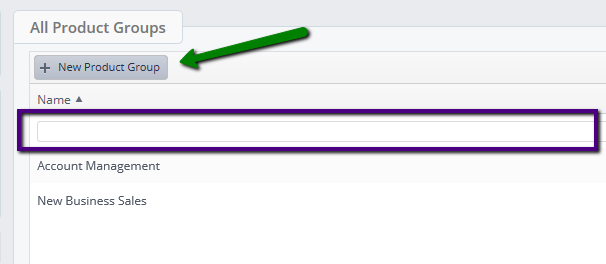
In the example below, we have created Account Management, Desk Account Management, New Business Sales and Commercial Approval groups

Create Product Group Templates
The purpose of product group templates is to group different product groups against different base categories (this is only configurable for services and not products due to potential issues with stock, the term "product" is used to define any item in the price book and not just physical products).
You can easily specify templates to base category to product and service types in this matrix style setup screen.
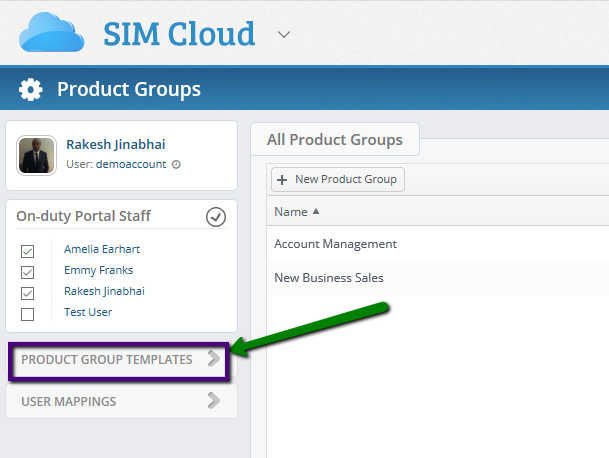
Then select New Product Group Template and add in the desired name of the template.
In the example below we have created Account Management, Desk Account Management and New Business Sales Templates.
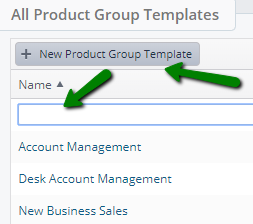
Map services to base categories
You can then select each product group template in turn to edit and allocate the templates by base category. As shown below, we are allocating the 'New Business Sales' template to Mobile, Hosted Telephony and Fixed Line only.
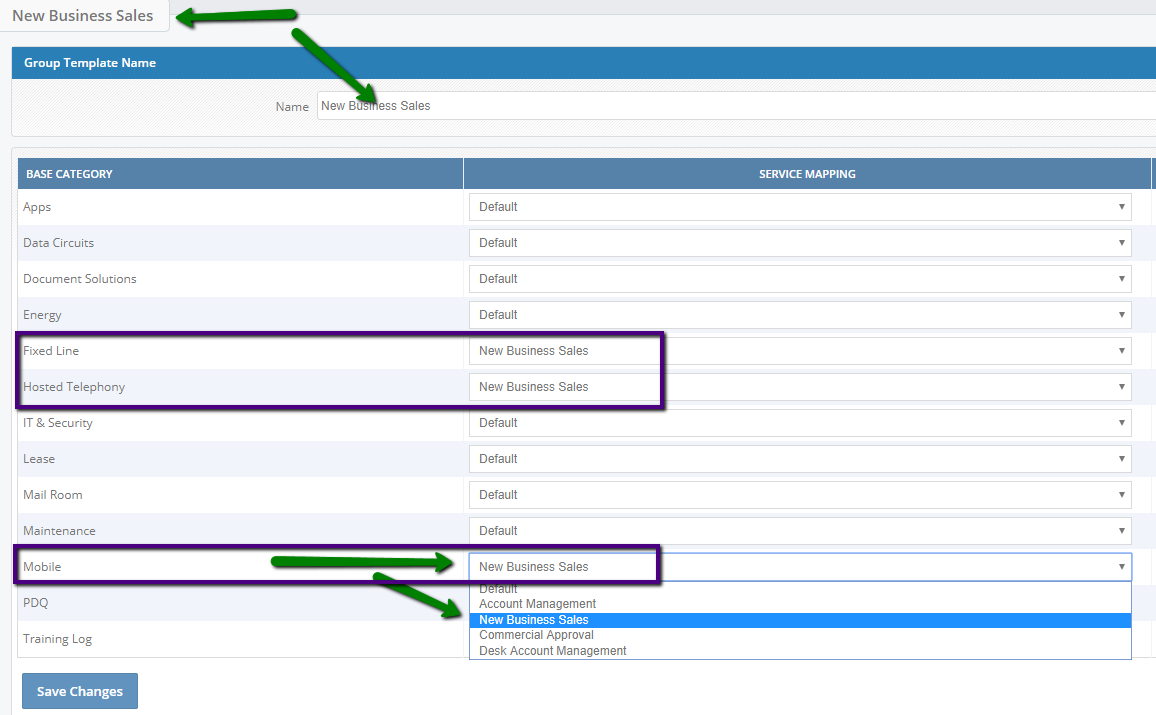
This will mean that any user who is mapped to those templates will only be able to see those price books in those associated base categories, i.e. in the above example anyone mapped to 'New Business Sales' (mapped as below) will only see the mobile, hosted and fixed line price books where 'New Business Sales' has been added as a group into the Group Name column in the price book, otherwise they would see the default price books
Map Users to Product Group Templates
Once you have set up the Product Groups and the group templates, you can then map the users by selecting the 'User Template Mappings' as below
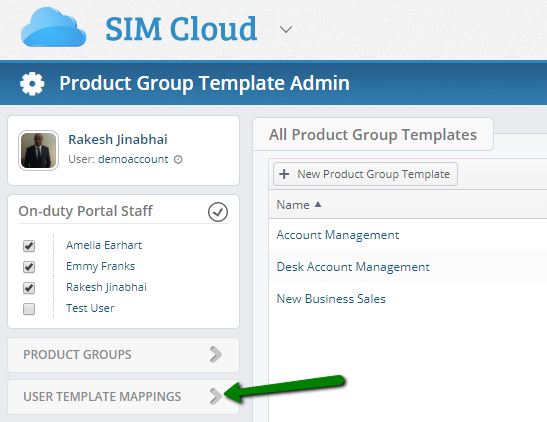
This will then take you to the area where you can map then product group template for each end user.
In the example below, Rakesh is mapped to New Business Sales and Emmy is mapped to Account Management.

N.B. Users who are not mapped, or where the product group template states 'Default' against the category & type combination, will see the 'standard' price books (e.g. those products without a group specified in the price books).
In the example above Amelia and Penny will only see the tariffs in the quote builder where no group has been added at price book level.
Create new/update existing price books
Next you will need to create new or update your existing price books with the relevant Group Name column.
We have added the column Group Name to the price book template and importers. As shown below we have added New Business Sales against a version of the price book for the new business team to use
N.B. It's important to check that the formatting of the imported Group Name matches that in settings or the price books will not map to those you've configured.

In this price book you can then set the Hold back OGR% to what you want to hold back from the New Business Team.
In the example below you can hold back 5% of the OGR from the standard 50% OGR, by adding 10% in the Holdback OGR column (calculated by 5/50*100)
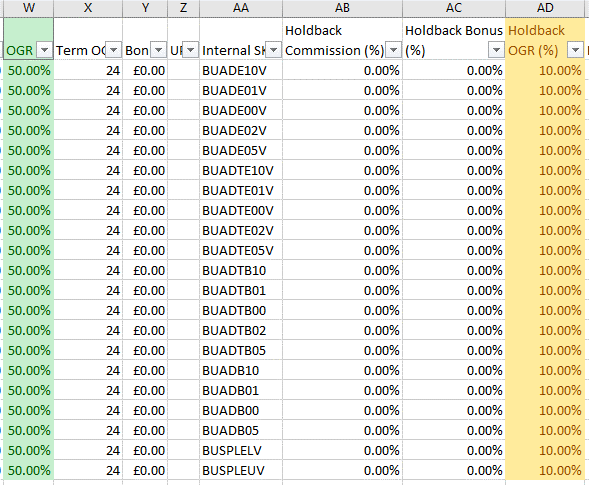
N.B. you should always keep the OGR % column (green) at 50% as this is the true OGR and is visible in the sales order reports and will be used for reconciliation purposes.
When the New Business Sales person creates a quote they will see 45% OGR in the quote builder as shown below:
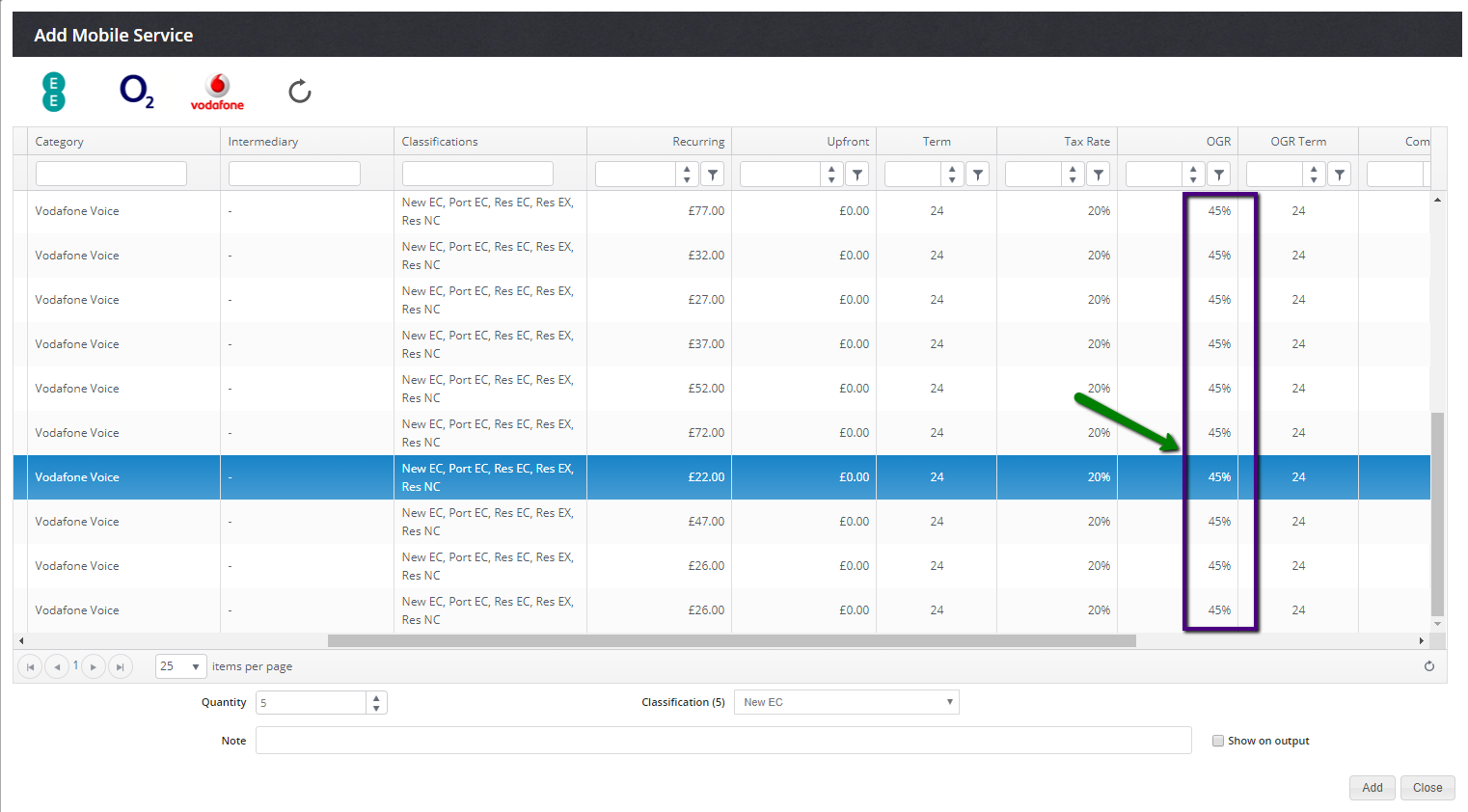
Therefore, when creating a quotation, the new business sales person will only have visibility of the net profit figure. Users in a commercial role (without the hold back setting applied) will be able to view both the held back and true profit values as shown in the finance report below:
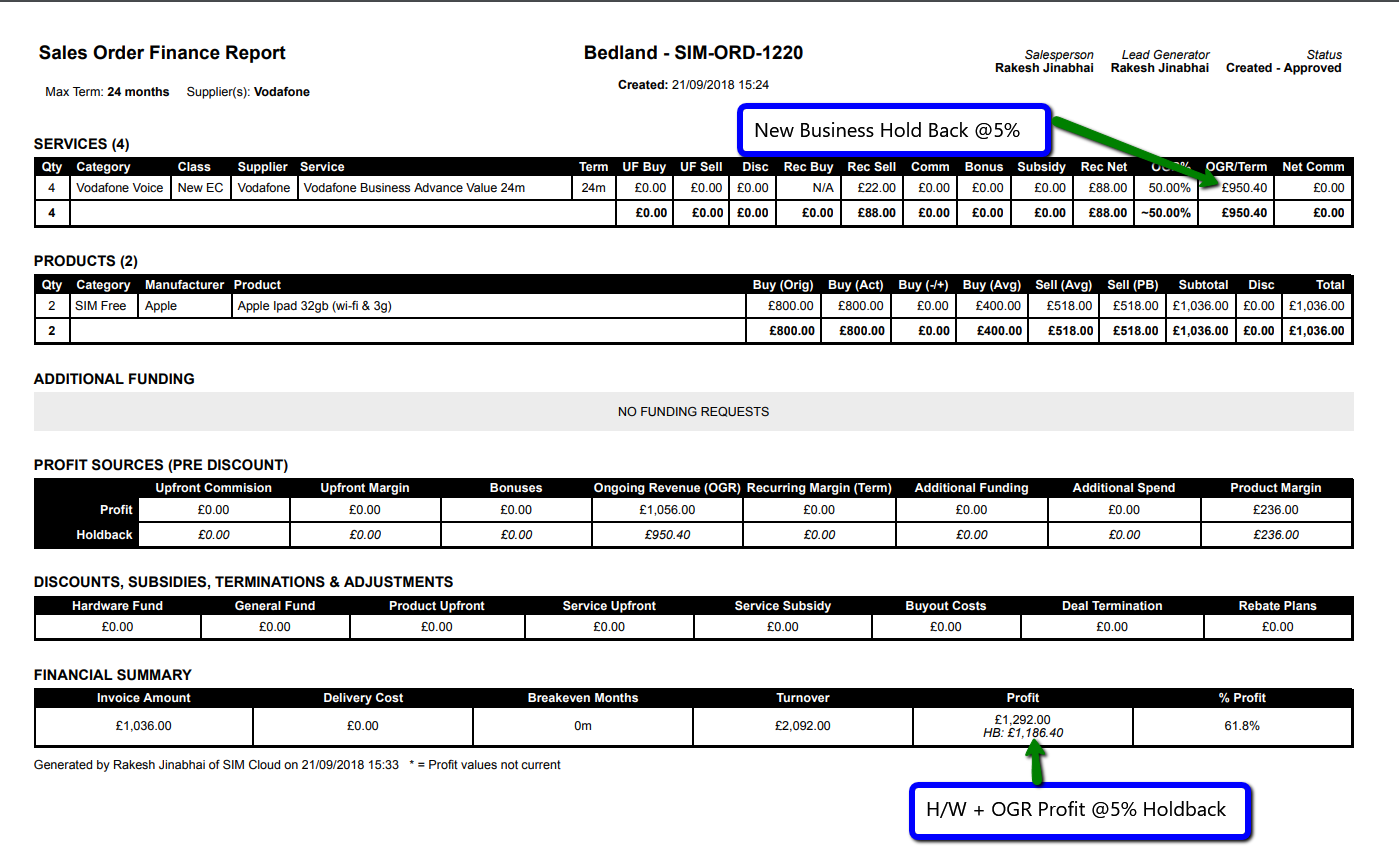
Finally, you will need to create versions of each price book for each group type and then you can apply different hold back % by group type.
For example, in the scenario below, where you need to have multiple hold back % by groups for your Vodafone price book but only one standard hold back across all groups for your EE price book.
You will need to create the following versions of the Vodafone and EE Price books:
Two versions of the price book would be required:
1. Default which includes the standard EE pricing + standard VF pricing held back at 5%
2. Account Management pricing which duplicates the EE tariffs (no changes are required) + amended VF pricing held back at 10%
- Price book = Vodafone, Group Name = New Business Sales, OGR = 50%, Hold back = 5%
- Price book = Vodafone, Group Name = Account Management, OGR = 50%, Hold back = 10%
- Price book = EE, Group Name = New Business Sales, OGR = 40%, Hold back = 10%
- Price book = EE, Group Name = Account Management, OGR = 40%, Hold back = 10%
NB The above price books can be collated and imported as one price book. Price books are set at product category level and not supplier level.
Checking the number of services per group
To ensure that the expected quantity of services have been imported to the correctly, simply filter on Group in the inventory manager for the relevant base category services. In the example below, we have 159 tariffs in the mobile services price book.
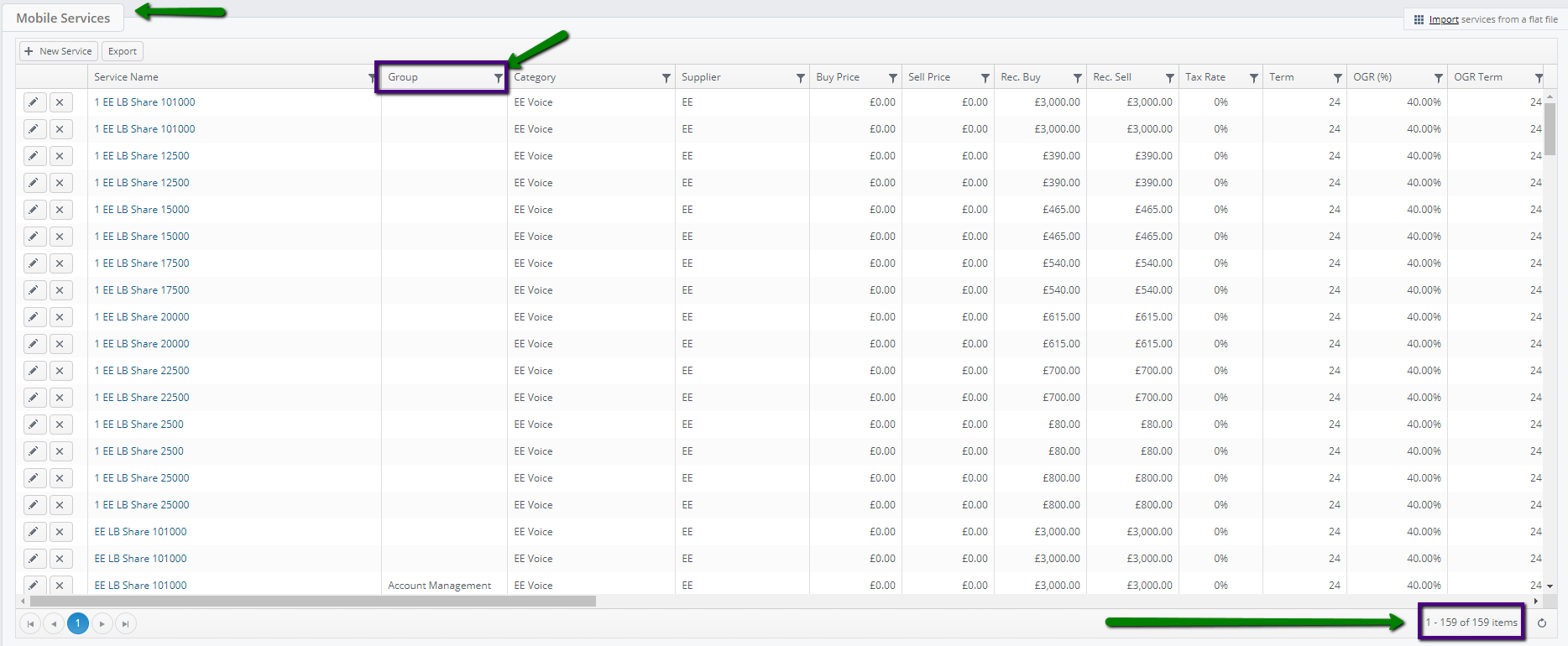
You can then filter further on Group by New Business Sales as shown below, to see how many services are allocated to New Business Sales
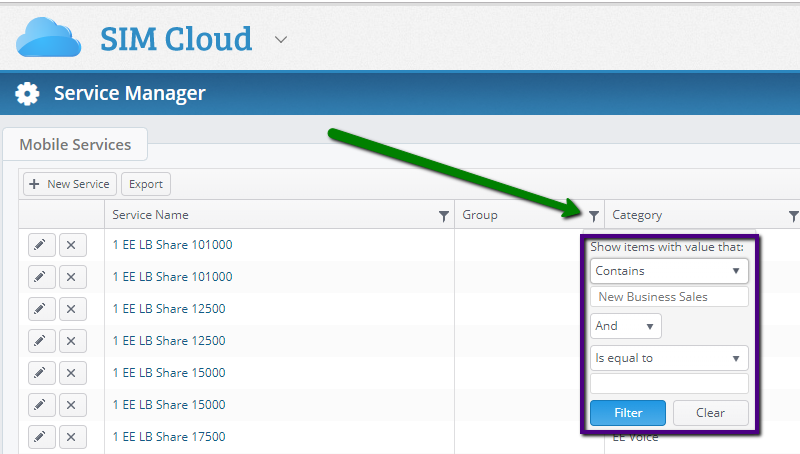
You can then see that there are 36 tariffs available to New Business Sales. You can make additional checks by filtering on supplier as shown below
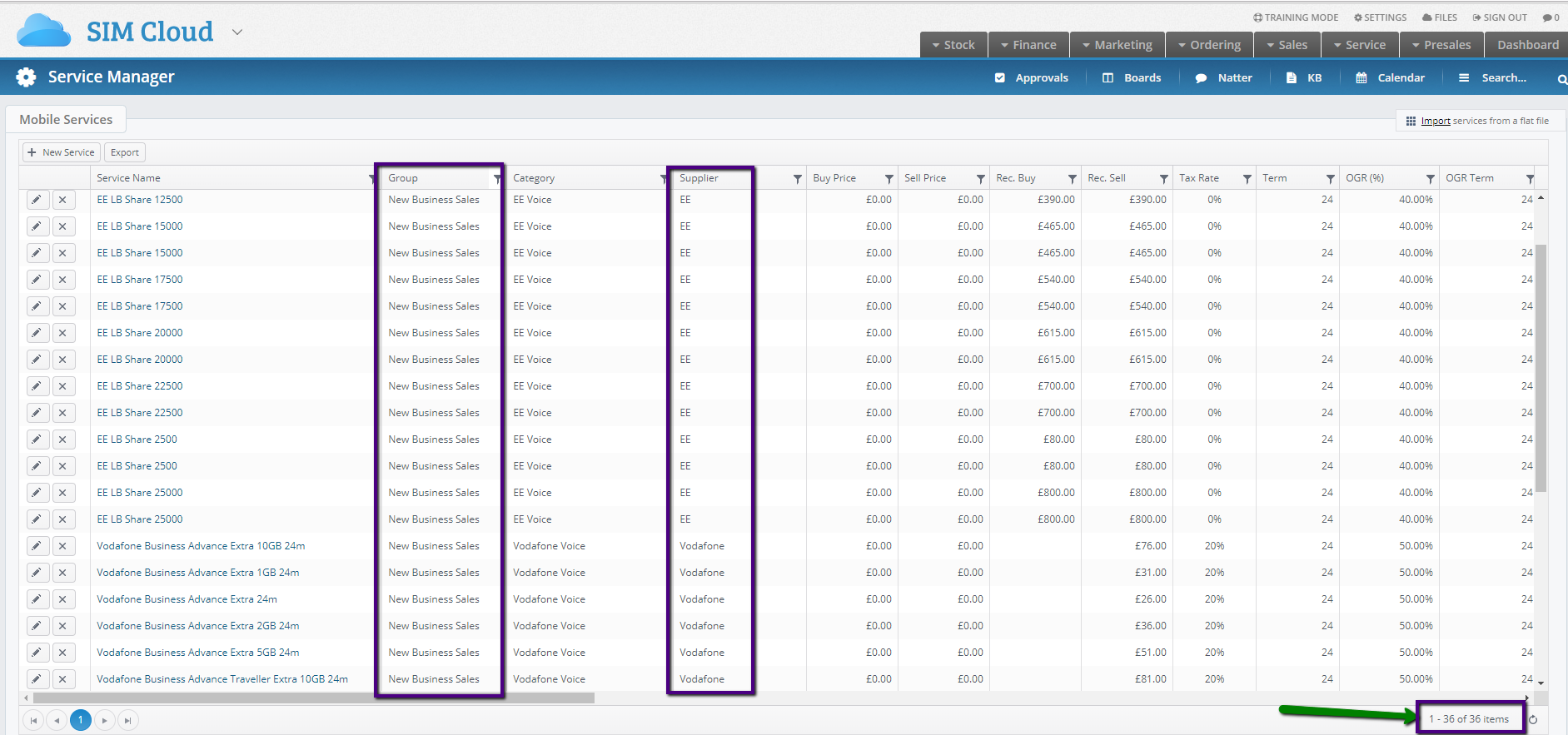
You can also edit existing price book items via settings to add the group as show below

Other examples where the Product Group feature could be used include:
- Where you want to have a price book that is only visible to the commercial team, so that they can add specific tariffs into a quote, once any network-based line rental discount has been approved.
Here you would create and add the Group Name “Commercial Approval” to a version of the price book (s) where the commercials contained the discounted tariffs (buy/sell or recurring buy/recurring sell) and a mapping template with the same name and map the members of the commercial team to that template
- You want to limit new business sales to only to be able to sell Hosted Telephony.
Here you would create/update your hosted telephony services price book with the New Business Sales Group.
In the new business template mapping you would map Hosted Telephony with New Business Sales and other group.
Because the price book has the group name populated there will be no default price book meaning only New Business Sales will see that pricing
